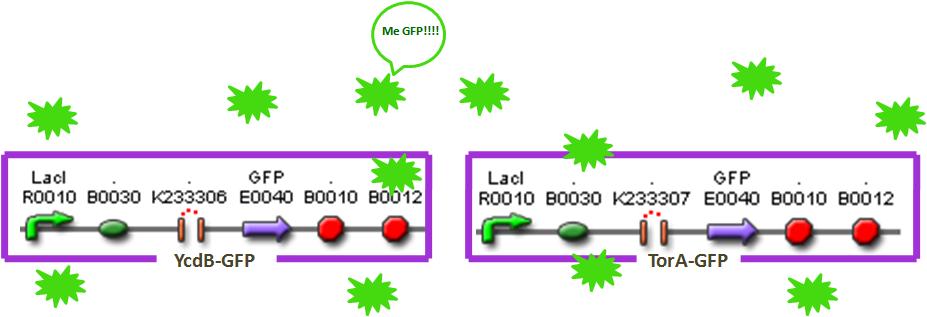SNOWDRIFT/Proof of concept
From 2009.igem.org
(Difference between revisions)
Samitwatve (Talk | contribs) |
|||
| (14 intermediate revisions not shown) | |||
| Line 1: | Line 1: | ||
| - | Proof of Concept | + | {{Team:IBB_Pune/header}} |
| - | + | {{Team:IBB_Pune/menu}} | |
| + | <br> | ||
| + | <p><span style="font-weight:bold; font-size:200%; color:#0000cc;">Proof of Concept</span></p> | ||
| + | <br> | ||
In order to establish cell-cell communication protein signalling can come in handy. | In order to establish cell-cell communication protein signalling can come in handy. | ||
We attempted to do this by attaching what we call a 'secretion tag' to our protein of interest. This 'tag' allows secretion of proteins. | We attempted to do this by attaching what we call a 'secretion tag' to our protein of interest. This 'tag' allows secretion of proteins. | ||
| Line 7: | Line 10: | ||
We tried to test this export mechanism using the following biobricks: | We tried to test this export mechanism using the following biobricks: | ||
| - | [[Image: | + | <br> |
| + | [[Image:Snowdriftproofofconcept.JPG|center]] | ||
| + | <br> | ||
| + | Both these constructs are designed to secrete the Green Fluorescent Protein in to the extracellular environment. | ||
| + | |||
| + | <html> | ||
| + | <p><a href="https://2009.igem.org/SNOWDRIFT/our_idea | ||
| + | "><span style="font-weight:bold; font-size:150%; color:#0000cc;"><u>Next</u></span></a></p> | ||
| + | |||
| + | </html> | ||
Latest revision as of 02:33, 22 October 2009

 "
"
